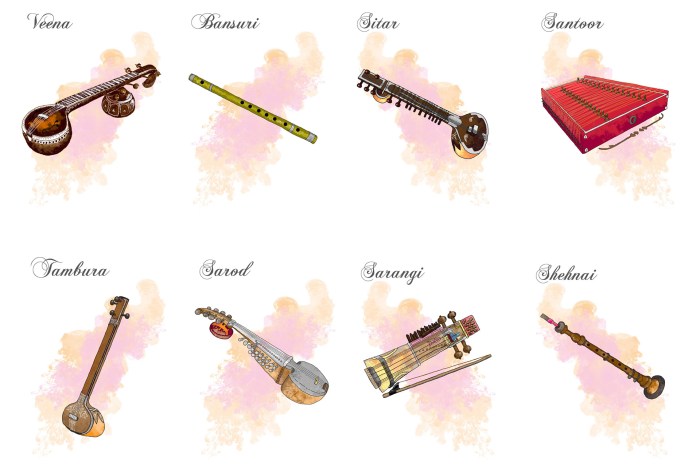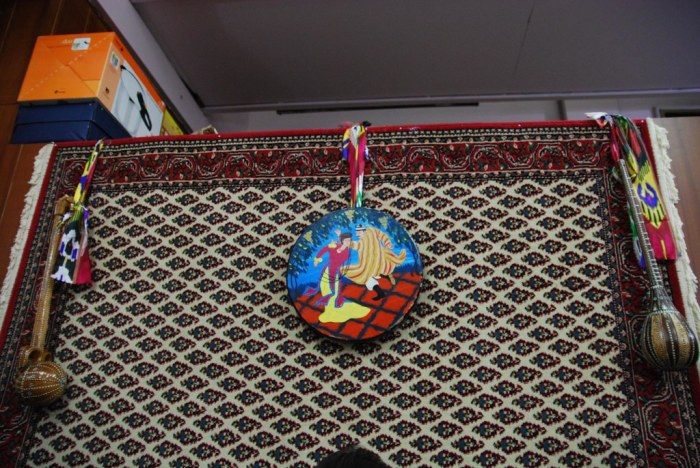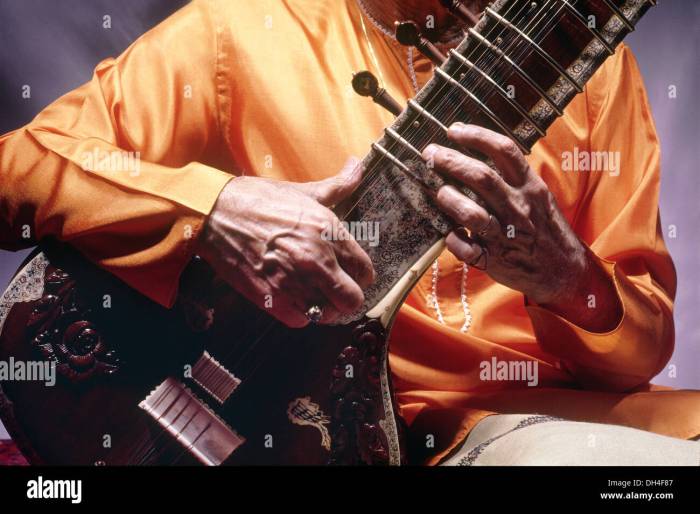Drum with a sitar crossword – Unveiling the enigmatic “drum with a sitar” crossword clue, we embark on a captivating journey that explores the harmonious interplay between these two iconic instruments. From the traditional rhythms of Indian music to the modern innovations that redefine their sound, this narrative weaves a tapestry of cultural heritage and artistic evolution.
As we delve into the historical connection between the sitar and the drum, we uncover the intricate rhythmic patterns that have captivated listeners for centuries. From the tabla, the tabla, the ubiquitous companion of the sitar, to the cross-cultural influences that have shaped their global appeal, this exploration unravels the secrets behind this timeless musical pairing.
Sitar and Drum in Music

The sitar and the drum are two of the most iconic instruments in Indian music. They have been used together for centuries to create a wide range of musical genres, from classical to folk to popular.
Historical Connection
The sitar is a plucked string instrument that is believed to have originated in Persia. It was brought to India in the 13th century and quickly became popular in the courts of the Mughal emperors. The drum, on the other hand, is a percussion instrument that has been used in India for thousands of years.
It is played in a variety of ways, but the most common technique is to strike it with the hands or with sticks.
The sitar and the drum are often used together in Indian music because they complement each other well. The sitar provides the melody, while the drum provides the rhythm. The combination of these two instruments creates a rich and complex soundscape that is both beautiful and exciting.
To solve the drum with a sitar crossword, you might need to brush up on your music theory. If you’re also studying business math, check out the abeka business math test 10 . It’s a great resource for acing your next exam.
And don’t forget to come back to the crossword puzzle once you’re done with the math!
Traditional Indian Musical Genres
There are many different traditional Indian musical genres that feature both the sitar and the drum. Some of the most popular include:
- Hindustani classical music
- Carnatic classical music
- Folk music
- Popular music
Each of these genres has its own unique style, but they all share a common foundation of sitar and drum playing.
Rhythmic Interplay
The rhythmic interplay between the sitar and the drum is one of the most important aspects of Indian music. The sitar player typically plays a slow, steady melody, while the drummer provides a complex and rhythmic accompaniment. The drummer may use a variety of different techniques to create different rhythms, and the sitar player must adjust his playing accordingly.
The rhythmic interplay between the sitar and the drum is a constant source of improvisation and creativity. The two musicians must work together closely to create a cohesive and exciting performance.
The Sitar and Drum in Crossword Puzzles

Crossword puzzles often feature clues that require solvers to identify a drum that is associated with the sitar.
Common Clue Format
The common clue format for “drum with a sitar” in crossword puzzles is: “Drum often played with a sitar.”
Possible Answers
Some possible answers to this clue include:
- Tabla
- Pakhawaj
- Mridangam
- Dholak
Connection Between Sitar and Drum
The sitar and the drum are both traditional Indian instruments that are often played together in classical and folk music. The sitar is a stringed instrument with a long, fretted neck and a gourd-shaped body. The drum is a percussion instrument that is played with the hands.
The sitar and the drum complement each other well, as the sitar provides the melody and the drum provides the rhythm.
Tabla

The tabla is a pair of hand drums commonly used in Hindustani classical music, originating from the Indian subcontinent. It consists of two drums, the larger one called the bayan and the smaller one called the dayan. The bayan is made of wood or metal and is played with the right hand, while the dayan is made of wood and is played with the left hand.The
tabla is an essential instrument in Indian music, providing rhythmic accompaniment to various genres, including classical, folk, and devotional music. It is often paired with the sitar, a stringed instrument, to create a captivating and harmonious sound. The tabla’s versatility allows it to adapt to different tempos and rhythms, making it a perfect complement to the sitar’s melodic improvisations.
Famous Tabla Players Who Collaborated with Sitarists
Over the years, several renowned tabla players have collaborated with sitarists to produce memorable musical experiences. Some notable examples include:
- Zakir Hussain, who has collaborated with Ravi Shankar, Ali Akbar Khan, and Vilayat Khan.
- Alla Rakha, who played with Ravi Shankar and was known for his intricate and dynamic tabla playing.
- Pandit Anindo Chatterjee, who has collaborated with Shujaat Khan and is known for his innovative and expressive style.
Cross-Cultural Influences

The captivating sounds of Indian music have left an indelible mark on the Western musical landscape, fostering a vibrant exchange of ideas and techniques. This cross-cultural pollination has resulted in innovative collaborations and a heightened appreciation for the intricate beauty of Indian instruments like the sitar and tabla.
Western Musicians Embracing Indian Instruments
Numerous Western musicians have embraced the sitar and tabla, incorporating their distinctive timbres and rhythmic patterns into their compositions. George Harrison of The Beatles was a pioneer in this realm, famously incorporating the sitar into the band’s iconic song “Norwegian Wood (This Bird Has Flown).”
Other notable Western artists who have explored the possibilities of Indian music include:
- Ravi Shankar, who collaborated with Yehudi Menuhin on the groundbreaking “West Meets East” album.
- John McLaughlin, whose Mahavishnu Orchestra fused jazz and Indian classical music.
- Mickey Hart of the Grateful Dead, who has incorporated tabla rhythms into his percussion work.
Impact on Indian Music’s Global Appeal
These collaborations have significantly contributed to the growing popularity of Indian music worldwide. Western audiences have been introduced to the mesmerizing melodies and rhythms of the sitar and tabla, broadening their musical horizons and fostering a deeper understanding of Indian culture.
Modern Innovations: Drum With A Sitar Crossword

In the realm of contemporary music, the sitar and drum duo has undergone a renaissance, with musicians pushing the boundaries of traditional Indian music. These artists incorporate electronic instruments, sound effects, and innovative techniques to create captivating and groundbreaking soundscapes.
Cross-Cultural Collaborations
Modern musicians are increasingly collaborating with artists from other cultures, leading to a cross-pollination of musical styles. For instance, the Indian sitarist Anoushka Shankar has collaborated with electronic music producers like M.I.A. and Nitin Sawhney, blending traditional Indian melodies with modern electronic beats.
Electronic Enhancements, Drum with a sitar crossword
Electronic instruments and sound effects are now commonly used in sitar and drum performances. These technologies allow musicians to manipulate the sounds of their instruments, creating ethereal soundscapes and rhythmic textures that were previously impossible.
Looping and Sampling
Looping and sampling techniques are also being employed by modern sitar and drum players. By layering and manipulating recorded loops, musicians can create complex and evolving soundscapes that push the boundaries of traditional Indian music.
Innovative Rhythms
Contemporary drummers are exploring new and innovative rhythmic patterns, influenced by Western genres such as jazz and hip-hop. This cross-cultural exchange has resulted in a vibrant and dynamic rhythmic vocabulary that complements the melodic intricacies of the sitar.
FAQ Overview
What is the most common drum paired with the sitar?
The tabla is the most common drum paired with the sitar in Indian music.
Why is the sitar often mentioned in crossword puzzles?
The sitar is a unique and distinctive instrument, making it a popular subject for crossword clues that require a specific musical instrument.
How does the rhythmic interplay between the sitar and drum contribute to Indian music?
The sitar’s melodic lines and the drum’s rhythmic patterns create a captivating and dynamic interplay that forms the foundation of many Indian musical genres.
